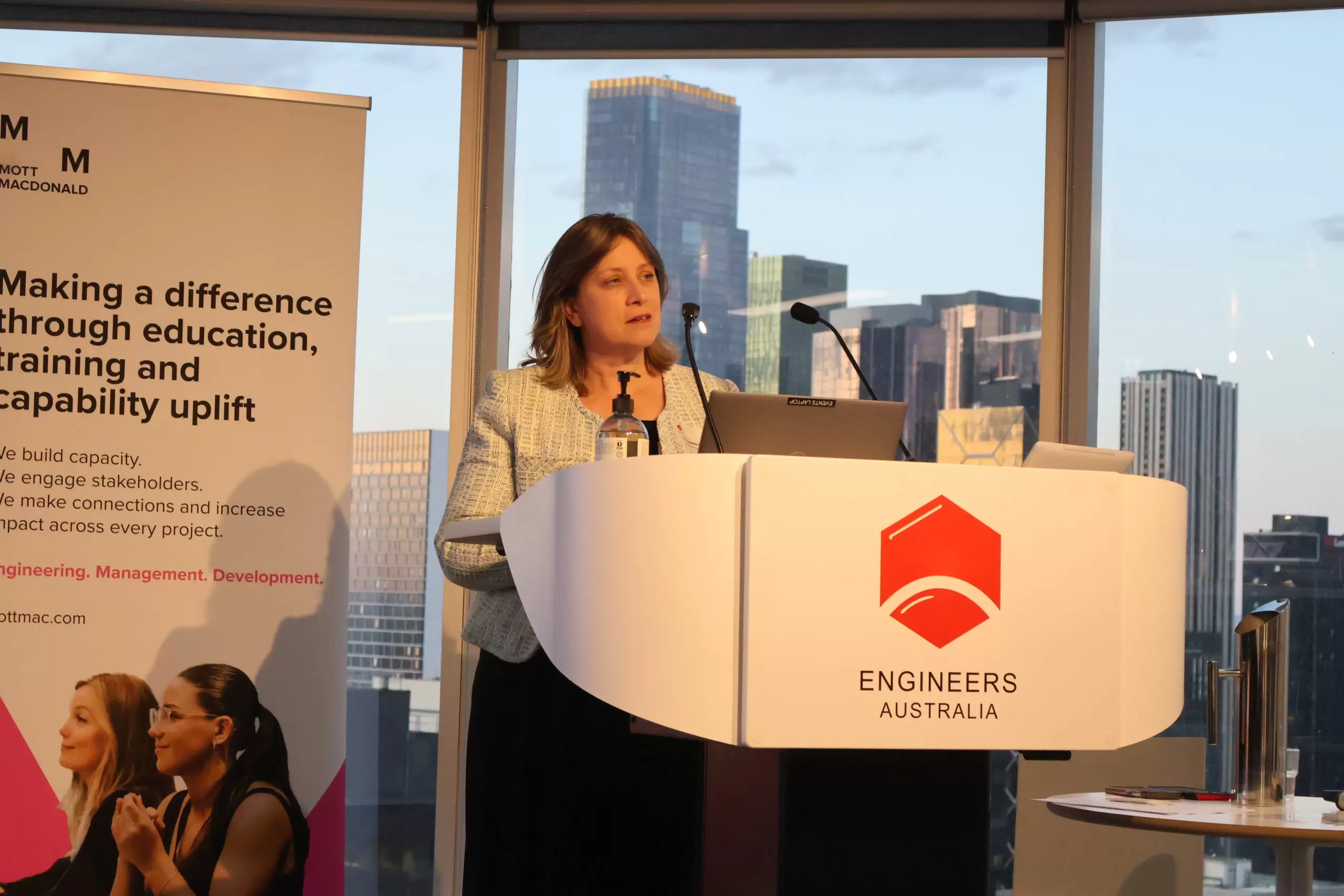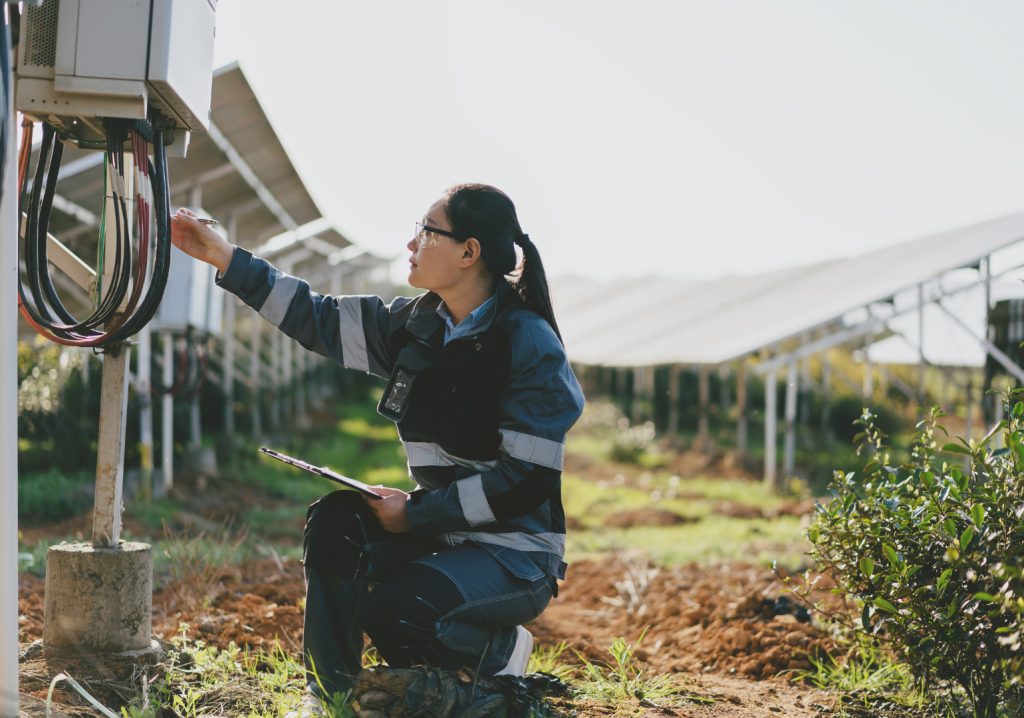Australia is embracing green energy, but the transition away from fossil fuels depends on engineering talent. New research reveals clear pathways for engineers transitioning to the renewable energy sector.
The Engineers Australia research, conducted with consultancy Mott MacDonald is detailed in a new report, Making a clean transition: Transferability of engineering skills for the clean energy transition. It identifies key areas of focus for government, industry and academia to help ensure the engineering sector is ready for a greener future.
The research considers the shift from the thermal energy sector to renewables and decarbonisation, as well as looking at the move away from fossil fuels within the thermal energy sector itself.
The report makes five key findings:
- Engineers possess transferable knowledge, skills, mindsets and capabilities.
- Building the engineering workforce remains a key challenge.
- Location will continue to play a role in the capacity to attract workers.
- Policy drivers are supporting innovation but need coordination.
- Training pathways are still needed.
“Engineers, with their problem-solving mindsets, are vital to create innovative solutions to spearhead the transformation to net zero,” Engineers Australia Acting Chief Engineer Bernadette Foley CPEng EngExec said.
“Many engineers will make the transition to the renewable energy sector easily, but some will require additional support. New measures are needed to make pathways clearer, and to ensure a sufficient stock of engineers in the face of competing industries.”

Applicable skills
The research showed engineers working in fossil-fuel industries are likely to be able to retrain, given transferability of engineering skills between different roles and industries on the whole, with engineering providing a good technical base regardless of discipline studied.
As one interviewee put it, “gas is gas, a fan for a boiler is a fan. If you’ve controlled something in a power station, you can control a [wind] turbine on top of a pole. The physics doesn’t change even if the motors are different.”
Another noted the essential similarity between skills for oil and gas networks and carbon capture and storage.
“We’ve got mechanical engineers, who look after our large compressors and … large rotating machinery, pumps and whatnot. They’re still going to be required because you’re still going to need to compress,” they said.
“Once you create a hydrogen source, you’re going to need to be able to pump it and liquefy it and put it onto tankers or convert it into ammonia and ship it. And the [carbon dioxide] that’s emitted, you’re going to need to compress that into a liquid form dehydrator, remove any liquids and start pumping it down [the] pipeline.”
Engineers in the right place
In many cases, the skills required by the clean energy sector already exist and, by encouraging flexibility and growth, employers can help engineers adapt their expertise from the thermal sector for renewable energy.
However, Australia is experiencing an ongoing engineering skills shortage, and countries around the world are competing for the same pool of engineering talent.
Many of the engineers who could make a difference here were trained overseas, but more than 40 per cent of engineers in Australia are not working in engineering.
Adding to the complexity, some vital roles, such as grid engineer, require years of experience, meaning engineers cannot be immediately redeployed.
The transition to sustainable energy is also affecting communities, the research found, with some locations that have been built on thermal energy production disrupted by the shift away from their industries.
A “just transition” will support these existing communities to adapt to a green future and work to include engineers from underrepresented groups in the energy workforce.
The report outlines “some fascinating pathways”, according to Engineers Australia General Manager of Policy and Advocacy Jenny Mitchell.
“It may actually be easier for an engineer to transition to renewables by taking a promotion into a project leadership role, rather than a lateral move into an equivalent technical role,” she said.
Another challenge involves the many sites of renewable energy production that are distant from existing population centres, requiring engineers and other workers to live in remote areas or engage in fly-in, fly-out work.
Coordinating response
Adapting to the new renewable landscape will require, according to the research, “a holistic, resourced and coordinated approach across government, communities, training providers and industry”.
Businesses, employers and other training providers should focus on shoring up the engineering talent available and encourage skills development for the future.
Pilot initiatives that help women return to the industry, for instance, could help engineers who have left the workforce bring back their needed skills, while increases in workplace flexibility and improved conditions and salary will see companies retain staff and remain competitive globally and with other sectors.
Governments can help too, both by commissioning bodies like Jobs and Skills Australia to provide demographic data that expands understanding of skills shortages, and creating a stable policy environment that encourages industry to invest with confidence in innovation.
Nikki Deighton, Education Lead at Mott MacDonald, said it is “incredibly important that we hear from the engineers who’ve undergone the successful transition to clean energy roles, and to help advise government on what the challenges and opportunities are to make a clean energy transition”.
“The time to move is now and there needs to be support.”
There is also opportunity for government to encourage training and reskilling, including by supporting the Net Zero Economy Authority to develop pathways for engineers to transition to the renewable energy sector, and to help accredit skills across entire industries, so that they are not lost when engineers shift between employers.
“Our research into the transferability of engineering skills for the clean energy transition comes at a pivotal time for government,” Mitchell said.
“It coincides with a raft of initiatives to support the transition to renewable energy, most recently through the budget announcement of a Future Made in Australia.”
Foley said that engineers play a key role in enabling sectors vital for new technologies.
“We are seeing new roles like energy efficiency engineers, solar energy engineers and blade engineers, and we require engineers for mineral processing to produce renewable energy technologies,” she said.
Megan O’Connell, Lead Researcher at Mott MacDonald, remarked on some of the more surprising takeaways from the research process.
“Employers [said] they don’t really hire based on engineering practice areas,” she said. “They accept that engineers are engineers.
“What they’re really looking for is [whether engineers] can suit the culture of … change.”
To read the full report and recommendations, visit the Engineers Australia website.
